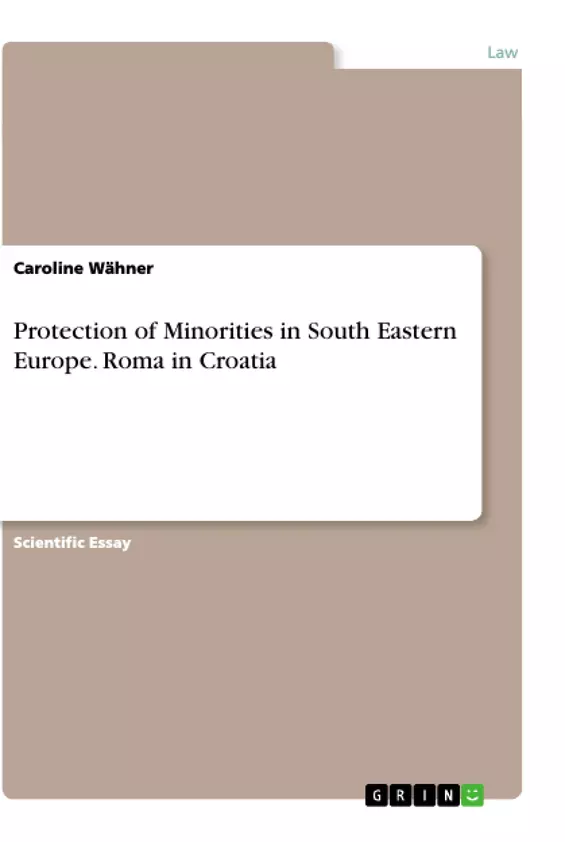A „typical image“ of Southeast Europe or “the Western Balkans” and its population and problems in literary terms was pictured by the author Karl May.
Even today, the word „Balkan“ as a collective term for Albania and the successor states to Yugoslavia (with the exception of Slovenia) holds the potential for conflict.
Only by showing the linguistic problem, we see, there is a high potential of geographical, juridical, political, social and communication problems in the context of this region.
On approaching the multiethnic structure of Southeast Europe and its willingness for accession – including integration measures – to the EU and considering the potential for conflict regarding the political and geographical classification, it becomes more than obvious that the current state of affairs is multi-layered and difficult.
Inhaltsverzeichnis (Table of Contents)
- Introduction
- Roma - a national minority in Europe
- The European position on the situation of Roma with regard to the EU accession process
- Minority protection of Roma in Croatia
- Citizenship
- Constitution
- Language & Education
- Access tot the labour market
- Prospect
Zielsetzung und Themenschwerpunkte (Objectives and Key Themes)
This paper examines the protection of Roma minorities in Croatia, specifically in the context of the country's EU accession process. It aims to analyze the legal framework for minority protection, highlight existing challenges, and explore prospects for future development.
- The historical and contemporary perception of Southeast Europe and the "Balkan" region
- The significance of Roma as a national minority in Europe, including their size, distribution, and diverse cultural expressions
- The European Union's role in promoting Roma rights and integration
- The legal framework for minority protection in Croatia, including citizenship, constitutional provisions, language and education rights, and access to the labor market
- The challenges and opportunities for Roma integration in Croatia.
Zusammenfassung der Kapitel (Chapter Summaries)
- Introduction: This chapter establishes the context of the paper by exploring the historical and contemporary perceptions of Southeast Europe and the "Balkan" region, highlighting the challenges associated with these terms and the importance of understanding the complexities of the region.
- Roma - a national minority in Europe: This chapter examines the Roma community as a national minority in Europe, discussing their size, distribution, and the diversity of their cultures. It also discusses the European Union's efforts to improve the situation of Roma people in Southeast Europe.
- The European position on the situation of Roma with regard to the EU accession process: This chapter analyzes the European Union's policy on Roma rights and integration, focusing on the role of the EU in promoting the protection and inclusion of Roma communities during the accession process of Southeast European countries.
- Minority protection of Roma in Croatia: This chapter examines the legal framework for minority protection in Croatia, specifically for Roma communities, covering aspects such as citizenship, constitutional provisions, language and education rights, and access to the labor market.
Schlüsselwörter (Keywords)
The key terms and focus topics of this work include: Roma, minorities, Southeast Europe, EU accession, minority rights, Croatia, citizenship, constitution, language, education, labor market, integration, challenges, opportunities, and legal framework.
- Arbeit zitieren
- Mag. Dr., LL.M., Mediatorin (FH) Caroline Wähner (Autor:in), 2013, Protection of Minorities in South Eastern Europe. Roma in Croatia, München, GRIN Verlag, https://www.hausarbeiten.de/document/903601


